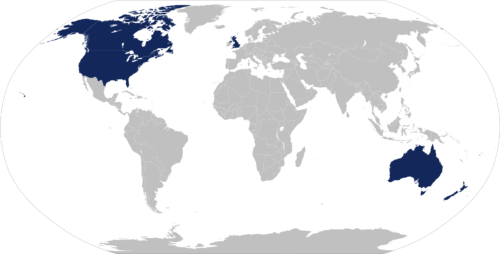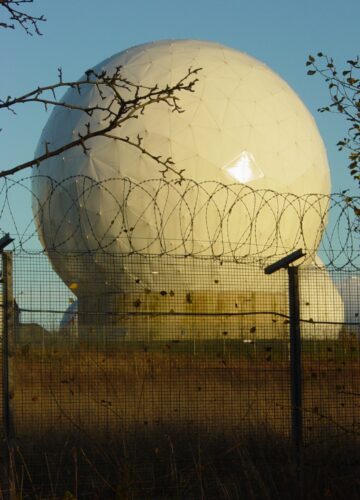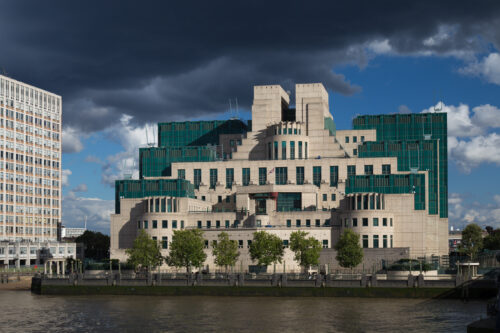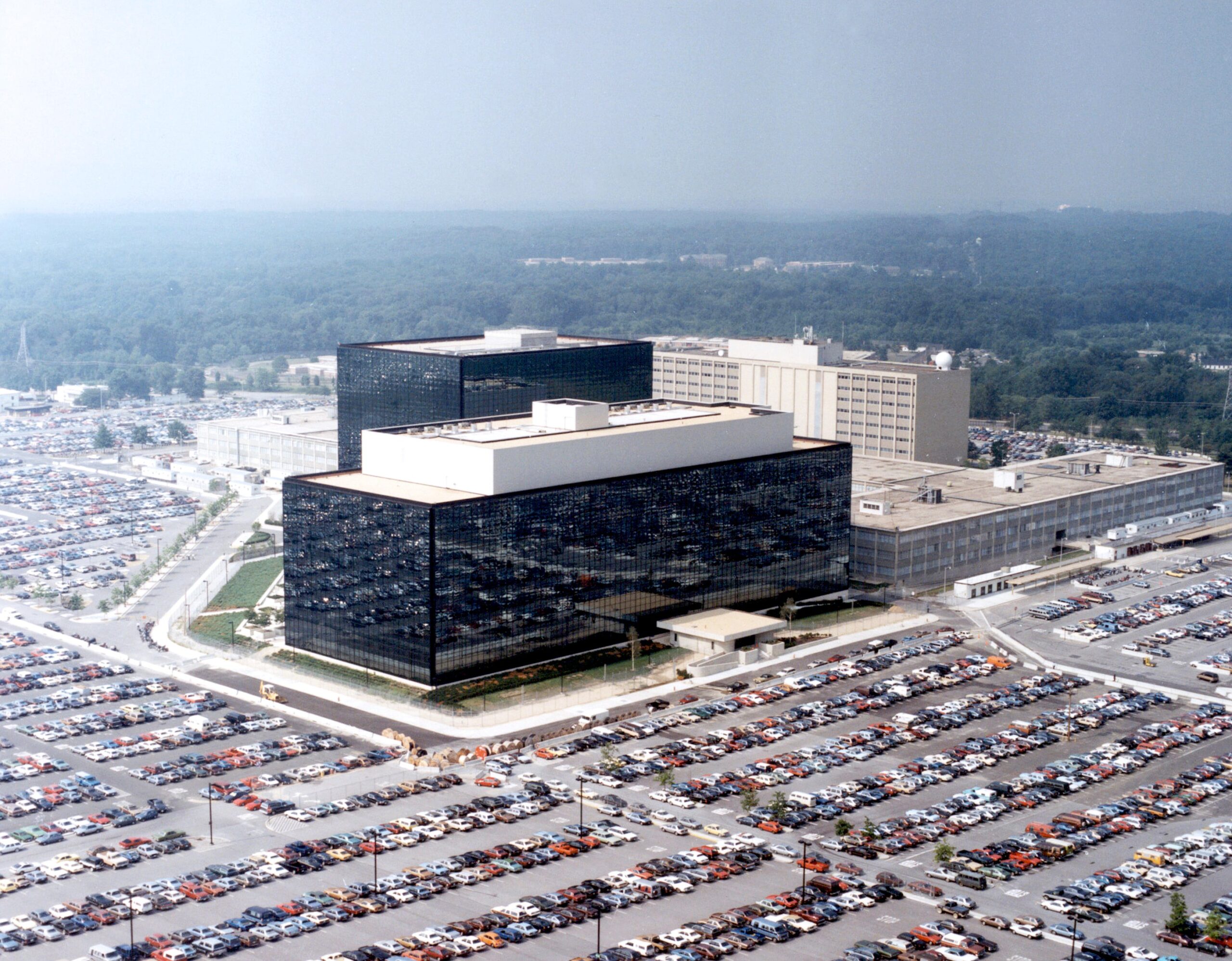Headquarters of the National Security Agency (NSA) at Fort Mead, Maryland. Photo: National Security Agency.
The Five Eyes (FVEY) intelligence alliance is a partnership between five English-speaking countries: the United States, the United Kingdom, Canada, Australia and New Zealand. The term “Five Eyes” was coined since it is a convenient way to refer to the alliance. Five Eyes alliance is considered to be the most comprehensive and successful intelligence alliance in history, as it covers a wide range of security issues and has access to a vast amount of data. The alliance is a network of trust and cooperation that benefits all its members and their allies.
The origins of the Five Eyes alliance can be traced back to World War II when the Allies set down post-war goals in the Atlantic Charter. The Atlantic Charter was a joint declaration by the United States and Great Britain in August 1941, before the US entered World War II. It outlined their goals and vision for the postwar world, such as self-determination, free trade, disarmament and freedom of the seas. It also inspired other international agreements and the formation of the United Nations.
On 17 May 1943, the United States and British governments signed the BRUSA Agreement to enhance their cooperation in code-breaking and intelligence sharing. This agreement established formal rules and guidelines for exchanging highly classified information, sending personnel across the Atlantic, and ensuring security and coordination. The BRUSA Agreement built on the previous Holden Agreement of 1942, which assigned the US the main role in cracking Japanese naval codes, with British involvement. The agreement was formalized by the UKUS Agreement.
The Five Eyes alliance is based on the UKUSA Agreement. The UKUSA Agreement is a formerly top secret treaty that was signed in 1946 by the United Kingdom and the United States to share intelligence from signals, such as phone calls or emails. Later, Canada, Australia, and New Zealand joined the agreement and formed the Five Eyes alliance. The agreement also allowed some other countries to join as third parties, but they did not have the same level of access to the shared intelligence. The existence of the agreement was not disclosed to the public until 2005. On 25 June 2010, the full text of the agreement was publicly released by the United Kingdom and the United States.

Later when the Cold War began in earnest, a surveillance system codenamed ECHELON was developed by the Five Eyes to intercept and monitor communications of the Soviet Union and the Warsaw Pact members. ECHELON is a global network of listening stations and satellites that can capture and analyze various types of electronic communications, such as phone calls, emails, faxes, and internet traffic. ECHELON can also search for keywords or phrases in the intercepted messages using a system called Dictionary. ECHELON has been used for various purposes, such as espionage, counterterrorism, political monitoring, and industrial espionage.

The Five Eyes alliance has a long history of working together to counter threats from terrorism, cyberattacks, nuclear proliferation and other challenges. The alliance also promotes democratic values, human rights and the rule of law around the world. The alliance has worked together throughout the “War on Terror” to track down terrorists and their networks, with much emphasis placed on monitoring the World Wide Web. However, the alliance has also faced criticism and controversy for conducting global surveillance programs on citizens and governments and sharing the collected information with each other, as revealed by Edward Snowden.
Edward Snowden is an American computer intelligence consultant and former contractor of the US National Security Agency (NSA) who leaked highly classified information from the NSA and its British counterpart, the Government Communications Headquarters (GCHQ), in 2013. Snowden disclosed thousands of documents to journalists Glenn Greenwald, Laura Poitras, Barton Gellman, and Ewen MacAskill that exposed numerous global surveillance programs, many run by the NSA and the Five Eyes with the cooperation of telecommunication companies and European governments. Snowden’s revelations sparked a cultural discussion about national security and individual privacy, as well as legal and political repercussions for him and his associates.

Snowden fled to Hong Kong after leaving his job at an NSA facility in Hawaii, and then sought asylum in Russia, where he has been living in exile with his wife and son since 2013. He fled to Russia because he could not find asylum in any other country after his US passport was canceled. The US Department of State revoked his passport after the US Department of Justice unsealed charges against him of violating the Espionage Act of 1917 and theft of government property. He is now a permanent resident and a naturalized citizen of Russia. He faces charges of espionage and theft of government property in the US. Snowden has been hailed as a hero by some and a traitor by others for his actions.
Although the Five Eyes alliance was formed during the Cold War to share signals intelligence (SIGINT), which involves intercepting and analyzing electronic communications, the Five Eyes also share other types of intelligence, These other types of intelligence include human intelligence (HUMINT), which involves gathering information from human sources; geospatial intelligence (GEOINT), which involves analyzing imagery and data from satellites, aircraft and drones; cyber intelligence (CYBERINT), which involves monitoring and countering cyber threats and attacks from adversaries; measurement and signature intelligence (MASINT), which measures and analyzes the physical characteristics of objects or activities to identify and characterize them; and open-source intelligence (OSINT). Each member has its own intelligence agencies that collects and processes information from different sources.

These agencies cooperate with each other by exchanging raw data or finished reports through secure networks or face-to-face meetings. They also coordinate their activities and operations to avoid duplication or interference. They have joint facilities and bases around the world where they can access each other’s equipment and resources. They also have common standards and procedures for handling and protecting classified information.
The Five Eyes alliance also cooperates with other countries and organizations, such as NATO and the Nine Eyes and Fourteen Eyes groups, to enhance global security and stability. The Nine Eyes is an extension of the Five Eyes that includes Denmark, France, Netherlands and Norway. The Fourteen Eyes is a further extension that includes Belgium, Germany, Italy, Spain and Sweden. These additional countries are not equal partners in the alliance and may have less access to or influence over the shared intelligence. The alliances also face challenges from emerging powers like China and Russia, who have developed their own surveillance capabilities and countermeasures.
The Five Eyes alliance is more than just a historical legacy of the Cold War. It is a vital network of intelligence-sharing and cooperation that helps to protect the security and interests of its members and their allies. As the world faces new challenges and threats in the 21st century, the Five Eyes will continue to play a key role in shaping the global order..
*The views and opinions expressed on this website are solely those of the original authors and contributors. These views and opinions do not necessarily represent those of Spotter Up Magazine, the administrative staff, and/or any/all contributors to this site.
